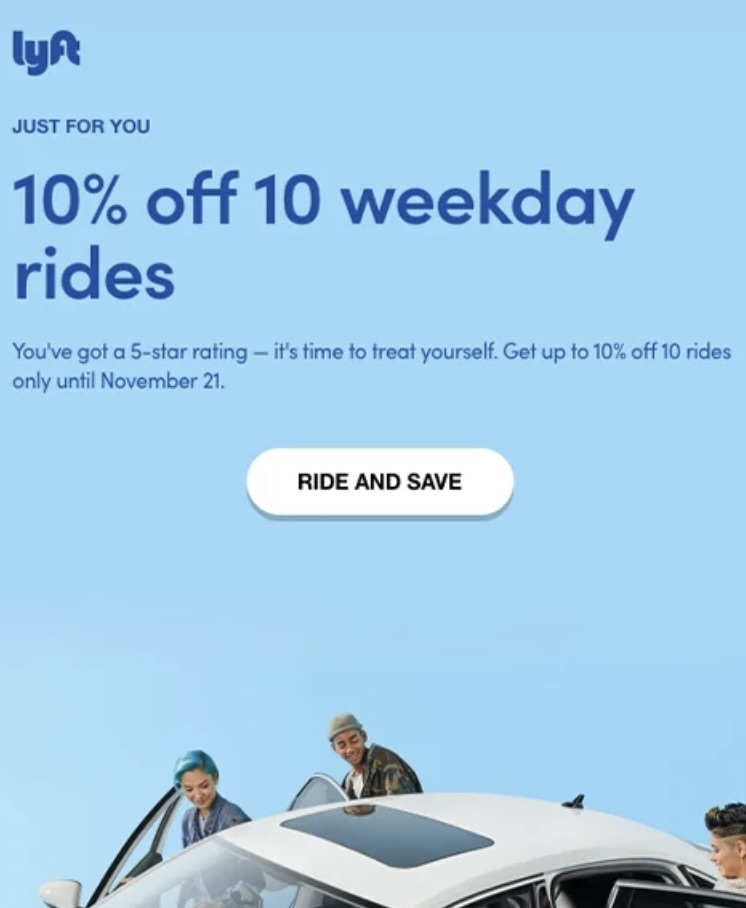
A Comprehensive Guide to 5 Types of Copywriting
Did you know that there are several types of copywriting? If you’re a new or aspiring freelance writer, developing your copywriting skills can be a great way to expand your repertoire and grow your client base. Copywriting is an essential part of any business’s marketing strategy, meaning copywriters are always in demand. In fact, demand for copywriters is expected to increase over the next decade, with over 80,000 new jobs!
If you want to learn more about the styles of copywriting you could offer as a freelance writer, then you’ve come to the right place. In this guide, we’ll look at five different types of copywriting:
- SEO copywriting
- Direct response copywriting
- Technical copywriting
- Website copywriting
- B2B copywriting
We’ll explore each of their unique marketing purposes and explain how Knowadays can help you launch your very own freelance copywriting career.
SEO Copywriting
Search engine optimization (SEO) copywriting focuses on securing a top position on search engine results pages (SERPs). Boosting SEO is a key priority for businesses trying to increase website traffic, expand their reach, and secure new customers.
Google searches are often the main focus for businesses’ SEO efforts, since it has an 81.95% share of the global search market. And, according to a study by Backlinko, the top website in Google SERPs garners over a quarter of all clicks.
SEO copywriting focuses on writing content that is optimized to rank well, and this involves various tasks:
- SEO copywriters identify and incorporate relevant long-tail and short-tail keywords and phrases (using tools such as Semrush or Google Keyword Planner).
- They ensure that content is engaging and easy to read, for instance, by using short blocks of text, bullet lists, and a clear heading hierarchy. Many SEO copywriters use the inverted pyramid technique – starting with the most important information at the top of the page and adding supporting details later on. This helps grab the reader’s attention and reduces bounce rates, which improves SEO.
- They refine meta tags (such as meta titles and meta descriptions).
- They include relevant internal and external links in the copy.
- They optimize content for mobile devices to help it rank well.
As an SEO writer, it’s important to strike a balance between readability and writing content aimed at pleasing Google. If you focus too much on writing for search engines, you risk losing the reader’s interest. Be sure to naturally incorporate keywords (no keyword stuffing) and create quality content that directly addresses user search queries.
For example, this product description for a PetSmart Kong toy incorporates keywords into the text without overusing them. It also provides all the necessary descriptive information in an engaging way:
For more tips on optimizing your copy, take a look at our SEO collection.
Direct Response Copywriting
Direct response copywriting is designed to elicit an immediate reaction from the reader, which is known as a conversion. Depending on a business’s goals, conversions may take several forms. Making a purchase, signing up for a newsletter, and downloading something are all examples of conversions.
Direct response copywriting is often used in ads, landing pages, and email campaigns. To drive conversions, it should be highly persuasive and have a very clear call to action (CTA).
Direct response copywriters typically focus on these factors:
- They write for skim readers by breaking content into lists and easily digestible blocks of content.
- They include headings and subheadings to create clear and compelling copy.
- They prompt action by creating a sense of urgency or scarcity. For example, by incorporating phrases like “limited-time offer” or “while supplies last.” This instills a fear of missing out, commonly referred to as FOMO.
- They write customer-focused copy to make the value of a product or service clear.
- They include a direct CTA to grab attention.
Direct response copywriting is most effective when it’s sincere and avoids a hard or aggressive sell that might alienate potential customers. For this type of copywriting, it’s best to avoid misleading sales tactics or manipulative emotional triggers (such as instilling fear, uncertainty, or doubt). Instead, focus on a product’s unique selling points and what the reader could gain by taking a particular action, such as discounts, rewards points, or other perks.
For instance, this CTA from rideshare company Lyft cleverly encourages action with the phrase “ride and save” instead of something basic like “Enter your email address.” Rather than simply demanding information, this copy puts the focus on the benefits to the user:

Technical Copywriting
Another common type of copywriting is technical copywriting. Technical copywriters focus on breaking down complicated or specialized technical information to make it more accessible to a broader audience. Typically used in industries such as technology, engineering, and healthcare, it is commonly found in:
- Instructional guides
- User manuals
- Blog posts/articles
- Business plans
- White papers
Best practices for technical copywriting include avoiding jargon (unless your audience is familiar with this terminology), including visual aspects such as infographics to reinforce concepts, and focusing on clarity and concision.
For example, this television user manual breaks complex information into numbered steps and bulleted lists and incorporates a variety of visual images such as diagrams:

Website Copywriting
Website copywriting is the process of writing engaging content for websites and apps to grab the reader’s attention and convey essential information. This style of copywriting often involves writing content for the following:
- Home pages: The first impression of the website, providing an overview of the brand, its value proposition, and what visitors can expect (e.g., this is the Starbucks home page)
- About us pages: Introduces the company’s story, mission, and values, helping to build trust and credibility (e.g., this one for the Allbirds footwear brand)
- Product/service pages: Detailed descriptions of offerings, focusing on benefits and features that address the target audience’s needs (e.g., this product page for Weber’s charcoal grill)
- Landing pages: Stand-alone pages designed for specific marketing campaigns or promotions aimed at driving conversions (e.g., this page for LinkedIn Premium)
Best practices for website copywriting include researching your client’s target market to tailor the messaging to their specific pain and gain points, adhering to a company’s preferred brand voice, and focusing on the unique value offered to readers. Also, because website visitors tend to skim content, it’s important to write short, impactful copy that quickly gets to the point.
Here’s a great example from BarkBox, a monthly pet food subscription service:
This copy may be short, but it checks every box! It uses BarkBox’s signature brand voice (friendly and humorous), directly addresses the customer and their pain points, and includes a very clear CTA.
B2B Copywriting
Business-to-business (B2B) copywriting is specifically tailored to businesses that sell products or services to other companies. Unlike business-to-consumer (B2C) copywriting, which focuses on individual consumers, B2B writing targets decision-makers within organizations. It emphasizes how a product or service solves specific professional challenges, streamlines processes, or enhances productivity within a business setting.
The copy is often more data-driven, relying on case studies, white papers, statistics, and product features to make a persuasive argument, as opposed to the emotional appeals used in B2C writing. For example, this article from Proofed targets businesses by demonstrating how the Linux Foundation benefited from using its editorial services.
In addition, the language and tone used in B2B copywriting are typically different from other forms of copywriting. Unlike most forms of B2C copywriting, B2B copy can incorporate technical jargon or industry-specific language since the intended audience is likely to be familiar with it.
Take a look at this example from workplace communications tool Slack:
This web page is specifically tailored to financial services businesses, using industry-specific language and compelling statistics.
Becoming A Copywriter
Are you interested in learning more about website copywriting and how to launch your own freelance business? Whether you want to change careers or add a new skill to your resume, check out our comprehensive Becoming A Copywriter course for everything you need to know about this in-demand field. Enroll for free, and get started today!





Your email address will not be published.